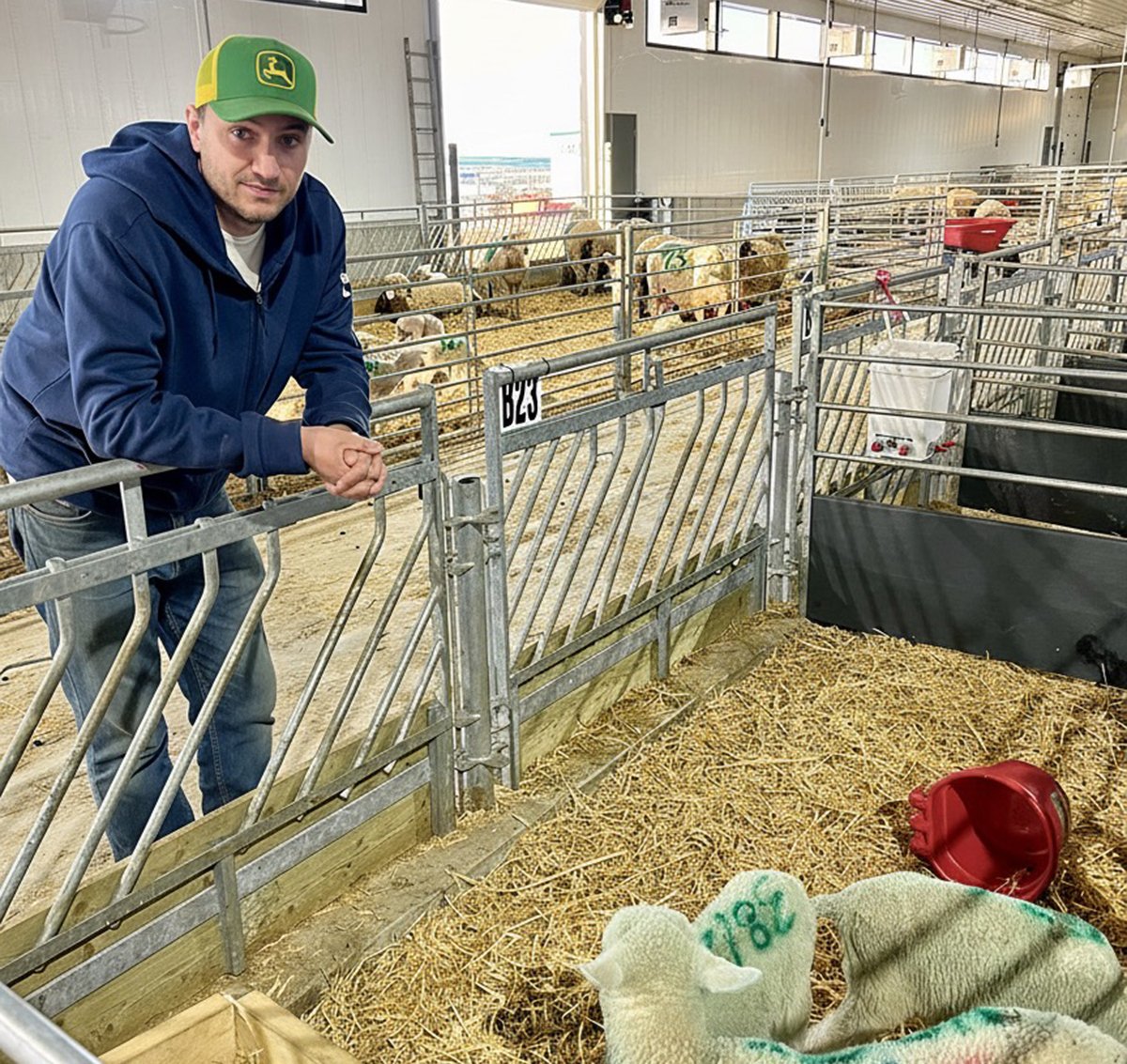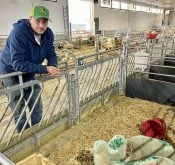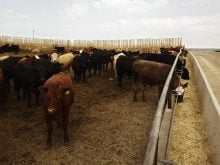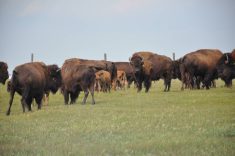Calves lost at calving may be born dead, victims of disease or a prolonged dystocia, or born alive but succumb because they fail to breathe. These latter animals can be helped if producers understand the breathing process and know what
to do.
Before a calf is born, its lungs are collapsed and its airways filled with fluid. During delivery, as its passes through the birth canal, pressure on the chest pushes some of the fluid up the trachea and into its mouth where it flows out or is swallowed. Any fluid left in the lungs is absorbed once breathing begins.
Read Also

Solar, sheep provide valuable farm diversification
Eric Steeves says raising sheep on forages grown under solar panels provided economic stability and perhaps even saved his family’s fifth generation southern Alberta grain farm.
The first breath a calf takes is the most difficult one, similar to inflating a balloon. Think of how hard you have to initially blow to overcome the resistance of a deflated balloon. However, once you start, less pressure is needed to continue the inflation.
The lungs act like a balloon. It takes tremendous work of the chest to get it started, but once air flows in and reaches the tiny sacs at the end of the airways, breathing becomes much easier.
Once a calf is born, the umbilical cord ruptures, completely cutting off the source of oxygen and the ability to rid the body of waste carbon dioxide. This carbon dioxide builds up and triggers breathing.
In most calves, breathing starts within 30 seconds of delivery. At first it’s irregular, but after a short time it settles down to a steady 45 to 60 breaths per minute. Calves born by caesarean section are slower to breathe because their carbon dioxide levels start out lower than in calves born vaginally. It takes longer for it to build up to a critical level to initiate breathing.
A simple way to tell if a calf has good breathing and heart function is to feel its muscles. If the muscles are contracting, or even if they just have good tone, it suggests they are receiving a sufficient supply of well-oxygenated blood. If they are flaccid, the calf is in trouble.
If a calf is not breathing right away, it’s time to step in. First, remove excess fluid from the mouth by wiping it out or hanging the calf upside down. The goal isn’t to get the mouth dry. Remember: residual amounts of fluid will be absorbed.
If the calf is still not breathing, help it take its first vital breath by putting it in sternal recumbency, which means setting it upright on its chest. This allows both sides of the chest to inflate evenly. A calf resuscitator can be used to push the air in. In an emergency, close the mouth, cup your hands over the nostrils and blow. Oxygen is not required; the most important part is the physical expansion of the lungs.
Once the first breath is given, most calves begin breathing on their own. However, some need continued stimulation, which can be done by pushing a finger or piece of straw up the nose. Vigorously rubbing the chest with straw or pouring cold water down an ear or over the head often helps.
Another option is acupuncture: inserting and rotating a needle in
a point on the nose. This simple procedure can help save calves. The acupuncture point is on the midline of the nose on a line that passes between the bottom of both nostrils. Just insert the needle and “peck” at the bone below.
What to look for
A calf should raise its head
within a few minutes of birth. Next, it gets onto its chest.
This takes four minutes with a normal calving and nine minutes after a caesarean. If it takes more than 15 minutes, there is a good chance the calf will die.














